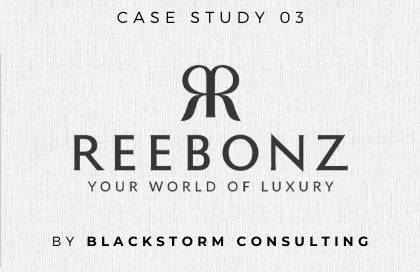Excerpt: Premium Case Study 03 – Reebonz
Our third premium case study is out. Here's a snippet!
Reebonz aspired to create the best luxury experience in Asia. Once seen as a success startup story for homegrown Singapore businesses, it failed. Why and how?
We're excited to share this third in-depth case study with you in this newsletter. It'll help you understand why the startup Reebonz failed and what you can learn from its mistakes.
The full version of this premium content is only available for paid subscribers. We are offering a 7-day free trial to access this premium content for free subscribers, and we hope you all like it ❤️!
Company Overview
Reebonz is an online and offline retail marketplace for buying and selling new and pre-owned luxury items in the Asia Pacific.
Description: Digital Marketing, E-Commerce, Shopping
Category: E-commerce, Digital marketing, and High-end Luxury Goods
Country: Singapore
Period: 2009 – 2021 (Acquired)
Size of the company: 201-500
Number of funding rounds: 3
Number of investors: 6
Total amount raised: USD 64 million
Reebonz aimed to provide Asian consumers with access to online shopping and affordable luxury. It attracted retailers to its platform to create an ecosystem in which consumers of luxury goods would become sellers in its marketplace. This has allowed Reebonz to offer items from over 1,000 brands and 172 boutiques worldwide.
Reebonz was once seen as a success story for homegrown Singapore businesses. However, after 12 years in operation, there were 33 customer complaints made to the Consumers Association of Singapore (CASE) against Reebonz (3 complaints in 2019, 12 complaints in 2020, and 18 complaints in 2021). The Straits Times also reported another 11 complaints lodged by sellers on Reebonz’s White Glove Service in August 2021, with claims of more than SGD 30,000 (USD 22,000).
In September 2021, Reebonz entered into voluntary liquidation, and its brand and digital assets were acquired by LiveCommerce Entertainment (a live streaming platform and marketplace) in December 2021. So what led to its downfall?
The Beginning
Daniel Lim and Benjamin Han met during their Singapore National Service in an Armour unit and launched Zuunbo.com, a website that featured daily discounts on items. The name is based on the Singaporean expression used to express disbelief and surprise.
With SGD 15,000 (USD 10,000) in seed funding, an additional SGD 5,000 (USD 3,300) from their savings, and office space in Singapore Management University (SMU) from the SMU Business Innovation Generator, which manages the Entrepreneurial Talent Development Fund together with Spring Singapore (Spring Singapore was combined with International Enterprise Singapore to form Enterprise Singapore in 2018).
Zuunbo.com was launched in April 2007. It proved to be hugely popular, especially amongst its female clientele. It offered its members discounts of up to 35 per cent on products, including MP3 players, beauty kits and even vouchers for upmarket apparel stores.
Each day at midnight, a new deal was launched, and only a limited number of deals and items were available each day. Zuunbo.com was also able to keep costs low using its eCommerce platform to offer clothing at significant discounts as compared to conventional retail outlets. Through cold-calling of larger retailers, they established partnerships, and the short 24-hour discounts increased retailers’ willingness to provide higher discounts.
Zuunbo.com actively sought to understand its customers with a blog that allowed its members to provide feedback to improve its product offerings. In June 2008, it had around 2,000 members on its platform.
Samuel Lim (elder brother of Daniel) founded eFusion Solutions Pte Ltd in 2004. eFusion Solutions provides solutions in these five areas - Sales Channel Management, Sales Force Management, Sale Leads, and Property Connect, which connects customers to property agents.
While watching tourists queue to buy high-end luxury bags from a Gucci outlet in Italy, Samuel came up with the idea of developing a website to make luxury goods accessible to Asian consumers. With the success of their previous company and noticed the trend in online luxury shopping and outlet shipping in Europe and the United States, Daniel, Samuel, and Benjamin moved into luxury e-commerce and co-founded Reebonz in 2009.
The Achievements
What contributed to Reebonz’s success was the network that Reebonz made with its suppliers in the United States, Europe, and Asia to source and bring luxury goods into Southeast Asia. In addition, the rising demand for luxury goods by the middle class in Southeast Asia has also contributed to Reebonz’s early success.
Through its omnichannel strategy, Reebonz provided both business-to-consumer (B2C) and consumer-to-consumer(C2C) services. As seen in the image below, Reebonz’s strategy was to convert buyers to become sellers on its platform, while its sellers, in turn, would be converted to become buyers on its platform.
By 2011, Reebonz had expanded into eight markets: Singapore, Malaysia, Hong Kong, Australia, South Korea, Taiwan, Indonesia, and Thailand.
From the image below, Reebonz used multiple channels (in green) and provided its customers with additional services and offerings (in blue) to support its ecosystem strategy.
You test the market, and the market decides. The market decides what you’re offering. Be practical and ride that wave. - said Samuel Lim, CEO of Reebonz
Reebonz also provided various C2C product offerings and services, such as its White Glove consignment service and Closets, which allowed customers to sell their pre-owned luxury products to other customers.
Reebonz also offered a Sell Back Guarantee option for its C2C offerings, enabling customers to sell products at a guaranteed price in exchange for Reebonz credits which could be used to offset purchases made.
To strengthen its certification and authentication service, Reebonz formed a partnership with VeChain, a public blockchain platform, to develop a digital tag that would enable product traceability, supply chain planning, product management, and proof of ownership of products.
In late 2015, Reebonz was valued at around USD 300 million, making it the most valuable luxury e-commerce startup in Southeast Asia. By 2017, Reebonz had 5.5 million registered members, a Gross Merchandise Value (GMV) of SGD 347 million (approximately USD 255 million) and net revenue of SGD 150 million (approximately USD 110 million).
In June 2017, Reebonz launched a 200,000 square feet SGD 39 million (USD 29 million) headquarters in Singapore.
In December 2018, Reebonz was listed on the NASDAQ Stock Exchange in the US as RBZ via Special Purpose Acquisition Company, Draper Oakwood Technology Acquisition Inc.
Reebonz formed a partnership with TWIST in January 2020, which enabled Reebonz to add more variety to the products on its platform. TWIST is a Hong Kong multi-brand luxury fashion boutique that retails brands such as Alexander McQueen, Givenchy, Fendi, Gucci, Prada, Stella McCartney, Valentino, and more.
The Failure Points
So what went wrong with Reebonz?
Sourcing of products
Growing with its customers
Emotional sentiment
Scalability of business
To find out more in-depth on Reebonz’s Failure Points, try out our 7-day free trial to access this premium content!
The Startups Failure Checklist
The People
As an eCommerce platform, it was easier for Reebonz to enter multiple markets simultaneously. First, however, Reebonz needed to ensure that its business operations were scalable and understood the various markets it served.
Business owners who intend to scale their business and enter into various markets should consider doing the following:
Internal
Setting up a data team
Don’t neglect the relationship with your investors
Understand your customers and address their needs
External
Identify your primary and secondary target audience
Test the willingness of customers to buy and sell (for C2C businesses) the products
The Process
When businesses attempt to scale and enter various markets, they need to streamline their business operations and processes to ensure the scalability of the business. When simplifying and scaling your business operations, consider the following points:
Outline processes required to support your business
Research
Calculate and estimate operational costs.
Know the business models of each product
The Product
When attempting to expand their business, it is also important for business owners to study how they can increase their product scalability and leverage their presence in various markets.
Increase product scalability
Maximise your product value
Use your market entry to your advantage
What’s Next?
The full in-depth edition of the Reebonz case study is available for paid subscribers only, and there are many more premium case studies to come.
We are offering a 7-day free trial to access this premium content for free subscribers, and we hope you all like it ❤️!
Don't miss out on a brief checklist of takeaways to help you scale your business!
Disclaimers
*All information extracted from external sources was correct as the article was posted. The information contained in this article represents the authors' views and opinions that are based on public data available online and do not necessarily reflect the position of the organisations mentioned in the article.
Hyperlinks for the information obtained from external sources are provided in the article. Please click on the links for updates on the information provided in the respective articles. Please email media@blackstormco.asia for any enquiries or clarifications on information contained within the article.










